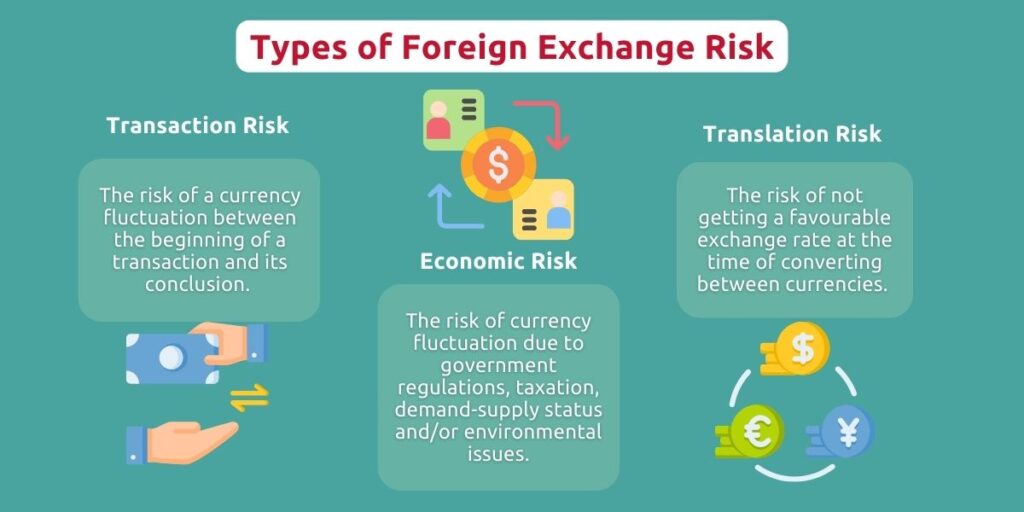Understanding Foreign Exchange Risk

Foreign exchange (forex) risk represents the potential for exchange rate fluctuations between currencies to cause your investments to be less profitable. One way to mitigate such risk is to diversify your portfolio between different currencies.
A diversified portfolio is a stronger portfolio; thus, it is in your favour to get acquainted with how investments in different currencies can impact your portfolio’s returns. In very simple terms, your portfolio return in Malaysian Ringgit (MYR) is the return in the foreign currency plus the change in currency compared to the ringgit.
You can be exposed to forex risk through a variety of investment assets, such as forex trading or investing in multinational conglomerates which are listed in foreign stock markets and that derive their share prices, dividends, and returns in foreign currencies.
Forex risk is not just delineated by the daily exchange rate between two or three currencies. Difficulties can arise in the form of transaction risks, economic risks, or translation risks. Transaction risks can occur when sending money between countries with different currencies. As currencies fluctuate almost daily, a delay between sending and confirmation of the transaction can mean the difference between losing and gaining a significant amount of money.
Economic risks mainly matter within a country and affect business profits. They occur because economic or regulatory policies within a country may cause the currency to strengthen or weaken. Meanwhile, translation risks can occur when a company has its headquarters in one country but conducts business in another. Companies with assets in foreign countries must convert the value of those assets to the home country’s currency, before reporting their overall quarterly or annual financial performance figures to shareholders and declaring dividends.

Thus, even with the risk of currency fluctuations, there are several strategies one can use to counter it.
3 Strategies to Counter Forex Risk
You can counter the risk of investing in foreign currencies by utilising three strategies: Hedging, Timing or (simply) Waiting.
Hedging is costly but effective in reducing the volatility of returns. It requires a company to enter into an agreement to sell foreign currency in the future in return for local currency. This offsets the impact of currency fluctuations as the value of your agreement will increase if the foreign currency weakens.
Though it sounds like an easy solution to counter risk, it can be a costly endeavour if you hedge wrongly, i.e. agreeing to buy Russian roubles at prevailing rates prior to the Ukraine-Russia conflict in February 2022, only for market prices to nosedive quickly when the war started and trading of Russian assets were halted globally.
Timing requires you to pay close attention to the markets, economies, and politics of different countries so that you can predict the waxing and waning of currency strengths. It is difficult to be consistent in your predictions because of the liquid nature of currency markets. Additionally, it requires a major level of time investment that might not be viable for someone who does not have the financial ability to concentrate solely on investing.
Waiting is possibly the hardest strategy, because it requires that you be patient and that you avoid getting swept away by sensational news headlines about the state of the economy. However, many seasoned investors will advise you to bear with short-term volatility through managing your emotional need to “save” your investments and trusting that it will all work out in the long-term.

Managing Forex Risk Within Your Portfolio
The focus on exchange rates can be a distraction, as people tend to think of currency risk as just how weak or strong a currency is in comparison to their own currency. On the contrary, currency risk is about the relationships between your local currency and the one that you invested in; the ebb and flow between these currencies is what affects your eventual returns.
Trading between currencies is popular, as can be seen by how many people are involved in forex trading; the appeal is clear as there are low transaction fees and high liquidity. It should be noted, however, that those are short-term risk-to-reward behaviours which can ultimately be more time-consuming than wealth-generating.
There are many ways to invest internationally on a larger scale, such as through mutual funds and exchange traded-funds (ETFs). Mutual funds are attractive because they offer access to a wider range of investments through sheer volume, which can offer reduced transaction costs to investors. Outside of a mutual fund, the same assets might be too costly for an individual to consider investing. The volume reduces your entry fee and overtime, and can minimise loss due to currency fluctuations.
ETFs are attractive because unlike mutual funds, there is no set amount you have to be willing to invest before you can join in. They are generally low-risk investments because of the low cost of including them in your portfolio, especially as they can cover a range of assets. ETFs also trade like stocks, allowing for greater control over the selling/buying prices, and offers the option to immediately reinvest dividends.
Explore Forex Investing with KDI
KDI Invest is a great way to enter into investing internationally without having to worry too much about currency fluctuations. This robo-advisor investing tool offers you U.S.-based ETFs with all the advantages of diversification and data-driven management.
The A.I.-driven robo-advisor is able to respond immediately to market fluctuations, while tailoring its recommendations to take into account exchange risk, thus countering currency fluctuations.
KDI Invest offers you the international portfolio diversification you desire without the worry of having to time or hedge against volatility in the currency market all by yourself. Visit www.digitalinvesting.com.my/invest to find out more.
